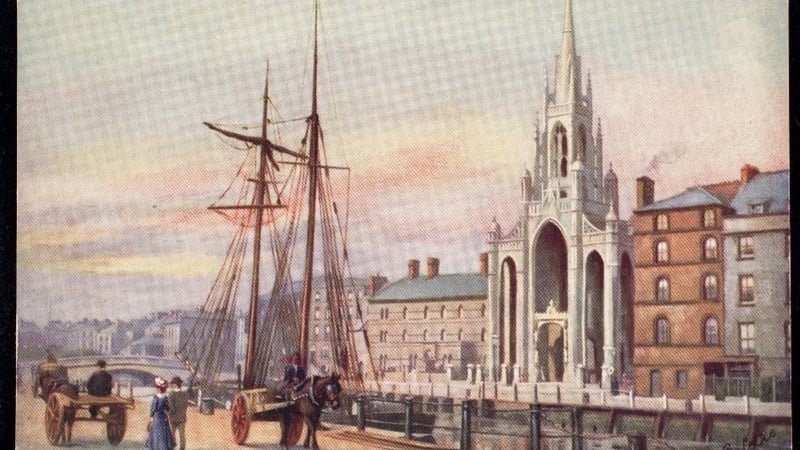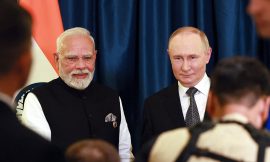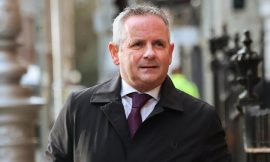Analysis: Here are some of the major events, colourful characters and curious facts which shaped the early years of Irish tourism
By Mariia Perelygina, TU Dublin; Barry Rogers and Samantha Morris, TU Dublin
The roots of Irish hospitality can be found in the Middle Ages. Undoubtedly, sea journeys and travel by coach or horseback were lingering and cramping. Pilgrimage was one of the main reasons for travel and pilgrims often stayed at monasteries and abbeys. Other accommodation options included modest inns, and castles and manors for noble travellers. Later, development of the post-chaise system and opening of purpose-built hotels marked the growth of tourism infrastructure in Ireland.
Canals, steamboats and Bianconi cars
The mid-18th and 19th century brought the boom of infrastructure development to Ireland, with package tours (mostly from England) and the first tourism advertisements. On the continent, the Grand Tour, a traditional upper-class trip to explore cultural legacy, was in full flow or could last for months or even years. At the same time, the elite aristocracy of Anglo Ireland began to look to the Irish countryside as a destination for their own ‘Home Tour’.
We need your consent to load this rte-player contentWe use rte-player to manage extra content that can set cookies on your device and collect data about your activity. Please review their details and accept them to load the content.Manage Preferences
From RTÉ Doc on One, Bianconi the Coachman looks at the life of Charles Bianconi and his influence on the modern transport system (first broadcast 1975)
The cross-country canals and steamboats improved connectivity and fuelled a new generation of Irish travel. Bianconi cars, a regular network of stagecoaches, made public transportation affordable and the commuter railway system made traveling speedier. Visits by Queen Victoria and various royals to Ireland brought great attention to the country and helped increase numbers of visitors and inspire necessary tourism infrastructure.
Popular tourism destinations of that period such as Killarney, the Giant’s Causeway, Bray, Portrush, Tramore and Kilkee became internationally well-known by watercolours, postcards, and illustrated guidebooks. They pictured a romanticised image of a country of scenic landscapes and natural beauty and picturesque ruins of medieval abbeys and pre-Christian tombs.

The father of Irish tourism
Born in Brimingham 1862, Frederick Crossley was a dynamo of Irish tourism development. He started his career in the Thomas Cook travel agency and continually made the case to the British government to develop the Island of Ireland as a holiday destination.
Apart from working closely with tour operating companies, railways, hotel owners and county sports clubs on developing new tourist products, Crossley compiled Visit Ireland: A Concise, Descriptive, and Illustrated Guide to Ireland (1900) and set up Ireland’s first tourism board the Irish Tourist Development Association (1891). He died at the age of 84 and his gravestone, now unfortunately dilapidated, in Dublin’s Deansgrange cemetery reads ‘The father of Irish tourism’.
Popular cycle touring enabled holidaymakers to visit places off the beaten track and easily vary their itinerary. The rise of mass interest in natural history induced short domestic trips for botanical observations or exploration of geological features and led to the establishment of natural societies and field clubs across the island. For Edwardian visitors, visual culture plays an increasingly important role: postcards, photographs, including amateur, have become widespread.
We need your consent to load this rte-player contentWe use rte-player to manage extra content that can set cookies on your device and collect data about your activity. Please review their details and accept them to load the content.Manage Preferences
From RTÉ Radio 1’s The Business, Prof Jim Deegan traces the history of Irish tourism since the first arrival of tourists in the 18th century
Inside the independent Free State’s travel industry
The First World War and the War of Independence took a heavy toll on Ireland’s infrastructure. However, the newly independent state quickly realised the economic value of tourism and the Irish Tourist Association was established in 1925 by Tipperary man John Patrick O’Brien, an anti-treaty IRA veteran. The association in the early days was staffed by leading figures of IRA such as Frank Ryan and C.S.(Todd) Andrews, and volunteer Hanna Sheehy Skeffington.
Its main objective was to promote Ireland as a tourist destination, specifically to the British middle classes because “90% of tourists to Ireland were from Britain”. Although the state and local authorities provided limited funds for promotional and publicity activities, the agency was very much of its time and had to raise its own funding. It published a number of guidebooks, promotional films folders and maps and a monthly magazine Irish Travel, which continued to be published for decades.

The slogan “See Ireland First” became a motto of the promotional campaign in the 1920s. Initially encouraging locals to travel around the homeland before visiting any international destination, it later changed its meaning completely and was about advising international tourists to see Ireland before any other country. Many examples of these early Irish travel posters are held in the National Museum of Ireland’s archives.
The arrival of mass tourism
The boom in civil aviation and the establishment of first non-stop transatlantic routes had an enormous impact on global and Irish tourism particularly. Ireland’s national airline Aer Lingus was established in 1936 and introduced its first transatlantic flight in 1958. In 1940, Dublin Airport opened with the inaugural flight to Liverpool. Opening in 1945, Shannon Airport became one of Europe’s most important transatlantic airports, handling more than 100,000 passengers in its first full year of operation. In 1947, it became the world’s first duty-free airport.
A rapid increase in private car ownership allowed access to parts of the island that had previously been uncovered. Much needed courses and programs in tourism and hospitality started at St. Mary’s College of Domestic Science in Dublin in 1941 and the Council for Education, Recruitment and Training (CERT) in 1963.

The first Irish souvenirs on offer in 1955 were based on Irish patterns, letters and heritage such as the Book of Kells. A national festival An Tóstal took place from 1953 to 1958, aimed to promote Irish culture and heritage and boost tourism in the off-peak season. The festival left a lasting legacy which can still be seen today in the likes of the Cork International Film Festival, Dublin Theatre Festival, the Rose of Tralee and many others.
The history and development of Irish tourism continue to this day. This overview shows the roots and the progress that formed the Irish travel industry as we know it today. We encourage readers to continue their learning journey by exploring the sources provided.
Follow RTÉ Brainstorm on WhatsApp and Instagram for more stories and updates
Dr Mariia Perelygina is a postdoctoral researcher at the School of Hospitality Management and Tourism at TU Dublin. Barry Rogers is Director, Destination Stategy at Toposophy. Samantha Morris is a senior research assistant in the School of Hospitality Management and Tourism at TU Dublin. She is also a PhD student whii is currently working on the FADE (festivals, audiences and the digital experience) project which is funded by Research Ireland.
The views expressed here are those of the author and do not represent or reflect the views of RTÉ




